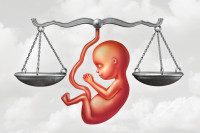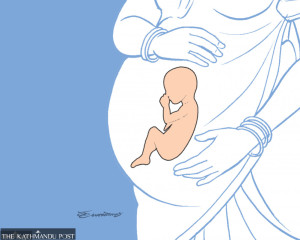Health
Air pollution emerging as a not-so-silent killer
Nepal is among countries with highest age-adjusted death rate from chronic obstructive pulmonary disease.
Arjun Poudel
On Sunday, a 61-year-old woman from Changunarayan Municipality in Bhaktapur district, reached Tribhuvan University Teaching Hospital to get her swollen feet examined.
Doctors at the hospital, who attended on her, found that her oxygen saturation levels had declined to 68-70 percent.
“Oxygen saturation level under 90 percent could quickly lead to serious deterioration in a patient’s health and oxygen saturation level under 70 percent could be life threatening,” said Dr Niraj Bam, a pulmonologist, who is also a senior chest physician at the hospital.
“The woman was suffering from chronic obstructive pulmonary disease (COPD). We advised the relatives of the patient to arrange for an oxygen cylinder at home and keep the patient on oxygen support for at least 16 hours a day.”
This was a common refrain among many patients who would reach major hospitals in the Valley seeking treatment for shortness of breath, lack of energy, chest tightness and wheezing issues at a time when the air pollution level levels have been rising to very unhealthy levels.
Nepal had the world’s highest age standardised death rates for chronic lung disease caused by air pollution in 2019—182.5 per 100,000 population with 3318.4 years lost due to ill health or disability.
The age-standardised death rate indicates the number of deaths per 100,000 persons of the mean population, when the age structure is kept unchanged during the whole reference period.
Experts say chronic obstructive pulmonary disease is a silent killer, which has been taking a heavy toll in the country. For the last few years, patients requiring continuous oxygen support have increased significantly due to respiratory problems, especially from COPD, they added.
“All people cannot afford to keep oxygen cylinders at home and it is not easily available in rural settings,” said Bam. “We do not have exact data on people currently suffering from COPD problems, but people of all age groups have been affected by the air pollution.”
Experts say, the early stages of COPD are almost unnoticeable. People may take their problems as flu, cough, problems of old age, and blame smoking and seasonal change. Besides, it could take years for serious problems to surface.
Various studies carried out in the past also indicated that lung disease is the number one killer in the country.
The prevalence of COPD surpassed all non-communicable diseases—coronary artery disease, diabetes, and kidney disease—in the country, according to a study carried out by the Nepal Health Research Council, sometime ago. The problem was responsible for 16.3 percent of the total deaths in 2019, an increase from 6.1 percent in 1990.
“Despite knowing that air pollution has been causing a major adverse impact on public health, we are not doing much to lessen the problems,” said Meghnath Dhimal, chief researcher at Nepal Health Research Council. “COPD problems have been rising not only in big cities but also in the rural settings and indoor pollution caused by burning firewood and dung cakes is responsible for it.”
The Council’s report showed that 25.1 percent of the Karnali region’s population—one in every four people—suffers from chronic obstructive pulmonary diseases, the highest number in the country.
Of late, Kathmandu’s pollution level has been worsening. Haze and fog covered almost all parts of the country on Monday, including the Kathmandu Valley. On Tuesday, Kathmandu Valley’s air recorded an air quality index (AQI) of 286. As per the United States Environment Protection Agency’s air quality index, when air pollutant PM2.5 reaches 201 to 300 μg/m3, air quality is considered very unhealthy; everyone may experience problems, with sensitive groups experiencing more severe effects. Doctors suggest people of risk groups, including children, pregnant women, elderly and those with respiratory illnesses to avoid all outdoor activities.
“Waste burning and open burning are still rampant, and authorities failed to control emissions from vehicles, factories and brick kilns,” said Raju Pandit Chhetri, director of Prakriti Resources Centre, which advocates environment-friendly policies and development practices. “Air pollution can be lessened and the government has expressed commitment to improving the situation, but it is yet to be seen in action.”




 5.46°C Kathmandu
5.46°C Kathmandu














